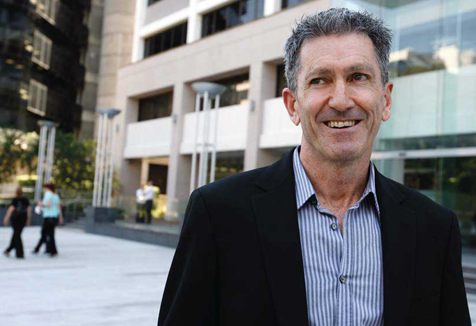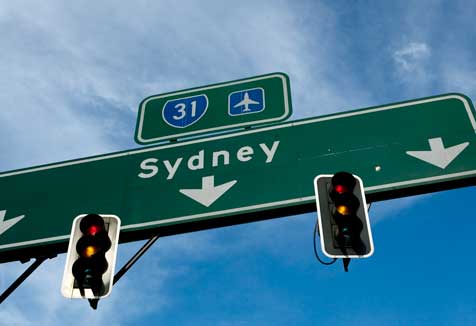
Professor Phillip O’Neill, Professorial Fellow at the University of Western Sydney Urban Research Centre in the School of Social Sciences and Psychology delivered this key note speech in Sydney on Thursday 29 November 2012 at the launch of two National Growth Areas Alliance (NGAA) reports: “Community Infrastructure for Growth Areas” and “Addressing Skills and Employment Gaps in Outer Metropolitan Growth Areas”
Thank you very much for the invitation to speak at today’s launch. I have read both reports in detail and congratulate the authors on the work that has been produced. The reports show once again that that the expansion of our cities is more than a housing issue. As important as it is to provide decent affordable housing, a roof over your head is only one aspect of a worthwhile life. New suburbs need to function as sustainable communities; for this they need basic infrastructure, access to quality health and education opportunities, and reasonable facilities for recreational and personal development.
Whatever your politics, all these things involve some sort of collective provision. They also involve a level of equity in provision. As Australians we believe that everyone should be in good health, have the chance to complete education to the highest level and have access to local facilities for sport, cultural activities, socialising and so on.
Finally, and I’ve left this to last because I think it is the most important, the residents of working age in our new suburbs need access to jobs.
Today I want to dwell on two issues related to this list of unmet needs in our growth suburbs. One is that the problem is bigger than what governments acknowledge, and the work by the NGAA to raise awareness of the problem deserves much praise. The second issue I want to dwell on is that we seem to worse off now in terms of policy than we were five years ago.
But first to the size of the problem.
The report by Essential Economics and Geografia charts the growth of Australia’s Outer Metropolitan Areas. The figures in the report are worth repeating, over and over. Table 1.2 on page 15 shows that Sydney’s two growth regions, the North West and the South West currently house over 900,000 people. In fifteen years this total will rise by 350,000 to 1.25 million people. The figures for Melbourne and Brisbane are remarkably similar. Melbourne’s three outer regions currently total 960,000 people. They will add 540,000 people in fifteen years to reach 1.5 million. Brisbane’s three growth regions have 850,000 people and they will add 430,000 people in fifteen years to reach 1.27 million. Around Australia the growth regions will add 1.84 million people in just fifteen years at an average annual growth rate of 2.8%, which I remember from school is exactly the rate required for something to double in size in just 25 years.
Understanding the demography of this extraordinary growth is important. The growth has three roughly equal components. The first source is high rates of family formation and fertility. Young families, nappies, strollers, pre-schools etc. The second source is in-migration, and for Sydney, and all our capital cities, there are two types of in-migration. One is international and the other is domestic. Both are important. The third source is ageing. Ageing occurs in all Australian regions. Importantly, ageing is an important source of population growth in Australia's growth regions.
The combined effect of having all three sources of growth in the growth regions is not just rising numbers, but also rising demographic diversity: different age groups, family types, ethnicities, languages and so on.
So pardon me if I get more than a little annoyed at the stereotypical portrayal of our outer growth regions: the idea that our urban fringes are filling with McMansions, bible belters, white flighters, young aspirational professionals, and so on.
Rather, there are only two constants: the growth rates are large, and the composition is diverse.
The second issue is whether governments are doing enough. Quite clearly from the reports the answer is no. The Elton Consulting report is in fact depressing reading. When you dig down beneath the raft of funding schemes you find very very little systematic provision of funding for much needed new urban infrastructure.
Six years ago it seemed Australia had finally accepted the need for properly funded coordinated action to fix Australia’s urban growth problems. A new Rudd Labor government commenced office with no national public debt and with handsome surpluses projected for each year between 2007 and 2010. These surpluses were to provide $40 billion in federal government cash to fund new infrastructure. A new body Infrastructure Australia was established to bring a new approach to infrastructure delivery. A Major Cities Unit was established within Infrastructure Australia to engineer a direct federal role in our cities. And a comprehensive COAG agreement was signed to bring much needed cross-government coordination to urban design and governance.
Sadly the momentum and enthusiasm of this urban development agenda seems to have dissipated. The global financial crisis wiped out $40 billion in surpluses. Infrastructure Australia announcements ever since have been modest and underfunded. Its latest call is for indiscriminate asset sell-offs in order to get some cash for new spending. Rival groups, such as the Mr Nick Greiner-led Infrastructure NSW are proposing alternate agendas. There is now silence around the COAG initiatives, and the Major Cities Unit seems to have lost the little leverage it had.
Unfortunately, in my view, the struggle of ten years ago to install the condition of our cities as a prime concern of government at all levels must now begin again.

Let me conclude by talking again about the jobs needs for Australia’s growth regions.
On Tuesday this week I was on level 41 of the NSW government’s Governor Macquarie Tower. The event I as at was led by top government bureaucrats spruiking the merits of design as a device for innovation and more effective ways of delivering public services. The context was clear: government budgets are contracting such that small scale demonstration projects and modest entrepreneurial actions are looked to in preference to grand projects and big spending. As I sat listening my eyes were drawn to the adjoining office towers, all with their own views of Sydney’s majestic harbour.
Back in the office I looked up the latest figures for jobs in the City of Sydney. Up by 10.5% between 2006 and 2011, I calculated. Not bad seeing as there was a global financial crisis in that period which ripped the heart out of the financial services industry worldwide. So what I was looking at in all those adjoining towers of professional workers was a total of 395,339 jobs.
Across the way, on the bit of the harbour not yet built out, there is a project underway called Barangaroo. When competed, Barangaroo will house $6 billion worth of commercial investments. Which will create, we are told, another 23,000 Sydney CBD jobs. Which works out at over 3,000 jobs per hectare. Remember this figure.
In comparison, we find these densities for Sydney’s newest employment lands: For the North West region, the ratio is 31 jobs per hectare; for the South West region it is lower at 25 jobs per hectare. And, the best new employment lands along the M7 corridor are barely yielding 15 jobs per hectare.
Barangaroo will yield 3,000 jobs per hectare.
The Essential Economics—Geografia report tells us that something like 110,000 to 120,000 jobs will need to be established in Sydney’s North West and South West over the next 15 years simply to maintain the presently inadequate local supply of jobs for these growth regions.
To put it another way, these two Sydney regions will need the jobs equivalent of five Barangaroos over the next 15 years, or one Barangaroo completion every three years.
But guess what the latest census data show about jobs growth in these two regions in the last five years. Zero. Zip. Very small growth in the south west was wiped out by a slight fall in the west.
My point is that adding 120,000 jobs anywhere in Sydney in the next 15 years is a huge task.
The effort we can see on a daily basis to get Barangaroo underway is ample evidence of the size of the task, and of the coordinated effort that has to take place between all levels of government and private sector investors. I find it puzzling that the NSW government accepts without question that it has the responsibility to play a direct role, and apply significant resources, to ensure the success of the Barangaroo project; that it could not succeed without government playing such a role. Yet, the assumption is that out in the west that five times this jobs growth will take place with barely any government effort whatsoever.
The figures of the past five years show what happens in jobs growth when you do little. You get little.
So there is much to be done. The reports released today set the next stages forward. They detail the infrastructure and jobs needs for this period of Australia’s growth in Australia's growing regions. The reports deserve government attention and action. Five years ago we started to get very close to consolidated government efforts to confront the very issues these reports alert us to once more. Infrastructure Australia, the Major Cities Unit, Regional Development Australia and the COAG agreement remain in place. But they are not in good shape.
It would be a shame if they were allowed to decline further. The issues we are discussing here today are too important to even contemplate failure.
Thank you.



